Random Noise 07
Random Noise 7
NuForce’s S-9 speaker
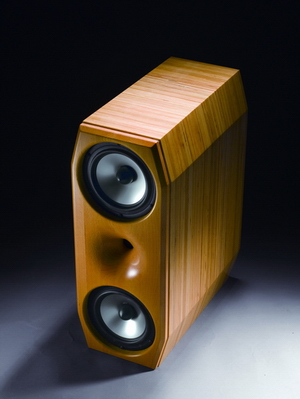
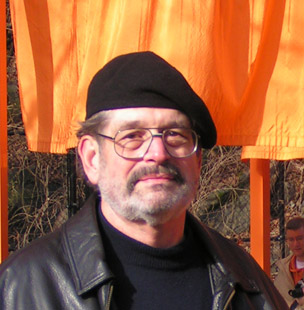 I’m obliged to begin with a conflict-of-interest declaration. Well, mostly. You be the judge. The thing is, I’m doing work for NuForce: editing the company’s Web site, promotional material, and soon, a newsletter. Obviously, so long as I continue with Random Noise I’ll not be writing about NuForce products or those of manufacturers that compete. Other stuff, yes – CD gear, cables, isolation devices, tweaky exotica, music on recording….
I’m obliged to begin with a conflict-of-interest declaration. Well, mostly. You be the judge. The thing is, I’m doing work for NuForce: editing the company’s Web site, promotional material, and soon, a newsletter. Obviously, so long as I continue with Random Noise I’ll not be writing about NuForce products or those of manufacturers that compete. Other stuff, yes – CD gear, cables, isolation devices, tweaky exotica, music on recording….
So, having disqualified myself, where do I do I get off writing about a pair of NuForce speakers? In answer to a reasonable question, a few – I hope reasonable – mitigations. Having owned four versions, the Series 8 being the latest, I’ve been a Wilson WATT / Puppy fan for a dog’s age. As a matter of simple expediency, had I found the S-9 speaker deficient, I’d not have written anything. That’s just prudent. Besides, no audiophile with a shred of self-esteem is likely to spring for a $5k pair of speakers, plus stands, on the strength of my report, nor should he, she or you. He, she or you don’t live in my house or my head. Different strokes…. Further, we need to remind ourselves that hi-fi’s an abbreviation of high fidelity, which once actually meant fidelity to the source: data in, data out, unmutated, unadorned. In our little world, the more audiophilic the audiophile, the more that individual’s judgments center on taste, and I don’t mean in music alone. Were it otherwise, flea-watt SET amps would occupy curio cabinets alongside mounted heads of horned jackrabbits and porcelain ballerinas, vinyl would remain with fake clapboard siding, and only geezers like me would know what vacuum tubes do.
Most of all, the imp of perversity tells me to do what I want. At bottom, I describe, you decide. Or skip ahead to the music reviews.
And just to prove I’m capable of growling at the hand that feeds me, two criticisms. NuForce should offer an alternative S-9 stained black. The dappled, natural-blond finish isn’t a comfortable fit in certain rooms. Because of the way the glue is worked into the laminated birch plywood’s end grain in order to obtain a smooth, unpitted finish, a black stain would probably not take as uniformly as it should. While it failed to pass the spouse-test here, the S-9 is, withal, an object the looks of which most hi-finiks would probably like. On a dedicated, approximately 70-pound pedestal, absent its external, cable-linked crossover, the 44.6-lb. S-9 stands about 47 inches off the ground, with its signature feature, the waveform tweeter, at about ear level. The pedestal’s feet are 12 inches across, the topside a mite less than seven inches across, conforming to the speaker’s base. To secure the speakers to their pedestals, I used Blue-Tack, a removable, non-staining adhesive you’ll find in any hardware store. Every household needs a wad. Sound Anchors, the pedestal’s manufacturer, provides four probably similar dots per stand, which NuForce did not include. The speakers and stands I’m writing about spent time in NuForce’s listening area: no break-in required. Obviously (second criticism), the slender S-9s need to occupy a lightly trafficked part of the room, particularly if young kids and / or frisky pets cavort about the premises.
With that mild spate of nay-saying behind us, let’s bear in mind that the only speakers with which I’m comparing the S-9s are my beloved Series 8 WATT / Puppies. Does a close to $30k speaker system render ludicrous a comparison with a $5k pair? (The stands are an additional $1k.)
First things first. The S-9 is a collaboration between its principal designer, Bob Smith of SP Technology Loudspeakers, and Casey Ng, NuForce’s product-development honcho. Laminations of birch plywood (costly compared to MDF) and a lot of hands-on labor make for a component that’s expensive to produce. NuForce’s Web site (www.nuforce.com) offers a detailed description of, among other features, the assembly process and waveform tweeter, a modified horn design positioned between two six-inch, aluminum-cone drivers.
Having lived with the S-9s for several weeks, I determined early in my listening that there’s nothing to say about them that deviates from the laudatory. If the S-9 has any character at all, it’s a delectable touch of warmth throughout the lower midrange and bass. Two immediately agreeable surprises: the S-9’s low end is extended and clean. Never mind “for a mini-monitor,” I mean dandy by any reasonable measure. Indeed, “clean” characterizes the speaker’s performance from top to bottom. It’s is a first-rate resolver. The image the pair projects produces a wide sweet spot with no abrupt edge, an effect that perhaps owes to the waveform tweeter’s dispersion behavior. One perceives a sense of seamlessness throughout the spectrum. In all regards, the S-9 is an exceptionally smooth operator. In checking out the system with a test-tone disc, the only frequency that stood out somewhat was at 125 Hz, which might have as much to do with the room as not.
Playing with toe-in proved enlightening. Taking my cue from the NuForce manual, I toed in the pair at perhaps a five-degree angle (I didn’t measure). That was indeed the move: compared with what I was getting with a steeper toe-in, I heard a more open yet stable and nicely detailed image. Good depth too. I had never attempted to set up the WATT / Puppies in this way. The Wilson manual recommends a more aggressive angle. In the listening position, one is supposed to see only a sliver of the speakers’ sides. Having dismantled the NuForce pair, I experimented with the Wilsons, setting them up with a five-degree toe-in. This time I measured. Lots of blue masking tape on the carpet.
I loved what I was hearing but, anxious creature that I am, I emailed a contact at Wilson. In describing my heretical setup, I suggested that it’s hard to argue with results, and he agreed. (We insecure types take comfort in validation.) To return to the smaller, lighter, happily maneuverable S-9 pair, they held their own. Instrumental and vocal textures sounded harmonically rich and bull’s-eye right, likewise shades of dynamic difference. Big sounds played big. No congestion, no compression at other than criminal levels. I’m guessing that the enclosure’s shape, layered construction, internal bracing, innovative tweeter, and the goodies within the cable-linked crossover join in producing a commendably lifelike, unboxy sound. This is a pair I could live with, and you heard that from a WATT / Puppy brat.
***
Recommended Recordings ![]()
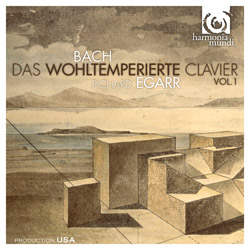 Musicologists cannot agree on what Bach meant by “wohltemperierte” (well-tempered) as the term applies to the forty-eight numbers ofDas Wohltemperierte Clavier, Book One, Richard Egarr, harpsichord (Harmonia Mundi USA HMU 907431-32, two CDs). Is well-tempered the same as equal-tempered (a pitch system in general use wherein the twelve semitones are equal intervals)? The question has long engaged scholars. For the casual listener, it’s all academic. The soundscapes and moods these preludes and fugues create are bound to captivate the civilized ear. Bach’s longstanding prominence looks in large part to the balance he strikes between an exquisite structural purity and a likewise superb depiction of human emotion, sunny to bleak. There’s been no shortage of recordings. This recent H-M release can be recommended on the strength of solid, thoughtful performances, a great-sounding instrument (a 1991 Amsterdam copy by Joel Katzman of a 1638 Antwerp Ruckers), and well detailed sound in just the right space (Doopsgezinde Kerk, Haarlem, The Netherlands, 2006; Robina G. Young, producer, Brad Michel, engineer). Best heard with the volume set low. The harpsichord’s voice is delicate and small. Its successor, the fortepiano, makes a lot more noise –– which is why it succeeded. (I remember Fernando Valenti performing Scarlatti’s harpsichord sonatas on Westminster LPs a pal played insanely loud: twangs, pings and clangs as if minted on Vulcan’s forge. Most gratifying and nothing whatever to do with life on planet Earth.)
Musicologists cannot agree on what Bach meant by “wohltemperierte” (well-tempered) as the term applies to the forty-eight numbers ofDas Wohltemperierte Clavier, Book One, Richard Egarr, harpsichord (Harmonia Mundi USA HMU 907431-32, two CDs). Is well-tempered the same as equal-tempered (a pitch system in general use wherein the twelve semitones are equal intervals)? The question has long engaged scholars. For the casual listener, it’s all academic. The soundscapes and moods these preludes and fugues create are bound to captivate the civilized ear. Bach’s longstanding prominence looks in large part to the balance he strikes between an exquisite structural purity and a likewise superb depiction of human emotion, sunny to bleak. There’s been no shortage of recordings. This recent H-M release can be recommended on the strength of solid, thoughtful performances, a great-sounding instrument (a 1991 Amsterdam copy by Joel Katzman of a 1638 Antwerp Ruckers), and well detailed sound in just the right space (Doopsgezinde Kerk, Haarlem, The Netherlands, 2006; Robina G. Young, producer, Brad Michel, engineer). Best heard with the volume set low. The harpsichord’s voice is delicate and small. Its successor, the fortepiano, makes a lot more noise –– which is why it succeeded. (I remember Fernando Valenti performing Scarlatti’s harpsichord sonatas on Westminster LPs a pal played insanely loud: twangs, pings and clangs as if minted on Vulcan’s forge. Most gratifying and nothing whatever to do with life on planet Earth.)
As a listener long since devoted to modernist art music, your reporter’s tastes tend toward the edge. The European and American jazz musicians I most enjoy bear slight to prominent traces of classical’s avant-garde, the difference residing in attitudes that, for me, operate as lines of demarcation. Even when the material is utterly abstract, a sense of looseness separates improvisational and improvisational-sounding jazz from classical’s gravitas. Further, the classical avant-garde I refer to is largely a thing of the past. Present-day art music seems to be reaching out toward a variety of loose ends. I wish it good luck but am not optimistic.
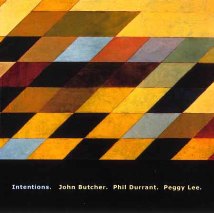 Meanwhile, classical’s vitality would seem to have migrated to the kinds of performance that, like modernism’s avant-garde, will probably never produce the kind of following the mainstream commands. Teetering at the edge of the edge, improvisation can only click if the participants, one, have the chops, and two, do their things in congruent grooves, however unanticipated those grooves may be. We return for an excellent example to that splendid “little,” Nuscope Recordings:Intentions, with John butcher, tenor and soprano saxophones; Phil Durant, violin; and Peggy Lee, cello (Nuscope CD 1011, Perry Barrett, principal engineer; Russell Summers, producer. The disc was issued in 2001 and of course is still available. For information, www.nuscoperec.com. Publicists prefer that reviewers cover new releases. Nuscope’s Russell Summers is perfectly happy to sell back-catalog items.)
Meanwhile, classical’s vitality would seem to have migrated to the kinds of performance that, like modernism’s avant-garde, will probably never produce the kind of following the mainstream commands. Teetering at the edge of the edge, improvisation can only click if the participants, one, have the chops, and two, do their things in congruent grooves, however unanticipated those grooves may be. We return for an excellent example to that splendid “little,” Nuscope Recordings:Intentions, with John butcher, tenor and soprano saxophones; Phil Durant, violin; and Peggy Lee, cello (Nuscope CD 1011, Perry Barrett, principal engineer; Russell Summers, producer. The disc was issued in 2001 and of course is still available. For information, www.nuscoperec.com. Publicists prefer that reviewers cover new releases. Nuscope’s Russell Summers is perfectly happy to sell back-catalog items.)
If you called it noise, my guess is that none of the participants would be offended. However, there’s noise and then there’s noise. Put it in the upper case –– Noise –– and you’ve got yourself a genre. What recommends Intentions (fabulous title!) is a deliciously detailed recording of some magisterially abstract, gorgeously poised, minutely detailed goings-on. These are no upstarts. Butcher, Durrant and Lee have been on the scene to excellent effect for a nice long time. “Writing about music is like dancing about architecture.” Never has Elvis Costello’s mischievous quip had greater relevancy. Just get the damned disc and listen with an open mind. I don’t recommend crap.
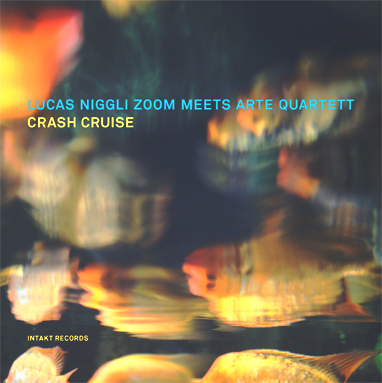 Nuscope’s headquartered in Texas. Intakt’s a Swiss label. The first Intakt CD I covered here is Sylvie Courvoisier’s excellent Lonelyville (Intakt CD 120). Lucas Niggli Zoom Meets Arte Quartett(Intakt CD 130) is a recent release and a humdinger. Arte is a saxophone quartet: Beat Hofstetter, Andrea Formenti, soprano and tenor saxes; Sascha Armbruster, Alto, soprano and tenor saxes; Beat Keppeler, baritone and soprano saxes. Zoom consists of composer-arranger-percussionist Lucas Niggli; Nils Wogram, trombone, melodica, voice; Philipp Schaufelberger, guitar.
Nuscope’s headquartered in Texas. Intakt’s a Swiss label. The first Intakt CD I covered here is Sylvie Courvoisier’s excellent Lonelyville (Intakt CD 120). Lucas Niggli Zoom Meets Arte Quartett(Intakt CD 130) is a recent release and a humdinger. Arte is a saxophone quartet: Beat Hofstetter, Andrea Formenti, soprano and tenor saxes; Sascha Armbruster, Alto, soprano and tenor saxes; Beat Keppeler, baritone and soprano saxes. Zoom consists of composer-arranger-percussionist Lucas Niggli; Nils Wogram, trombone, melodica, voice; Philipp Schaufelberger, guitar.
It’s all good news. The disc is demo quality, gutsy division. If your sound system has a solid low end and big, sturdy legs, you’ll impress the bejesus out of enemies, guests, distant relations on your wife’s side, what and whomever, if you play it loud. Niggli, whose performance rarely departs from its supportive role, is an inventive, good humored, often witty composer who rejoices in just about everything, including –– musically –– astral projection and nouvelle cuisine. (I’m funnin’ but only just….) I don’t love every track equally, but when this band’s cooking, it’s a noteworthy meal. Niggli’s sidemen, trombonist Wogram and electric guitarist Schaufelberget, make good use of their opportunities to shine, and the sax quartet’s blendings, a lot of them novel, contribute substantially to one’s sense of satisfaction.
Check out Intakt’s catalog at www.intaktrec.ch for an excellent example of a small label’s place among the flaccid biggies.

![]()
Don’t forget to bookmark us! (CTRL-SHFT-D)
Stereo Times Masthead
Publisher/Founder
Clement Perry
Editor
Dave Thomas
Senior Editors
Frank Alles, Mike Girardi, Key Kim, Russell Lichter, Terry London, Moreno Mitchell, Paul Szabady, Bill Wells, Mike Wright, Stephen Yan, and Rob Dockery
Current Contributors
David Abramson, Tim Barrall, Dave Allison, Ron Cook, Lewis Dardick, Dan Secula, Don Shaulis, Greg Simmons, Eric Teh, Greg Voth, Richard Willie, Ed Van Winkle, and Rob Dockery
Music Reviewers:
Carlos Sanchez, John Jonczyk, John Sprung and Russell Lichter
Site Management Clement Perry
Ad Designer: Martin Perry





Be the first to comment on: Random Noise 07